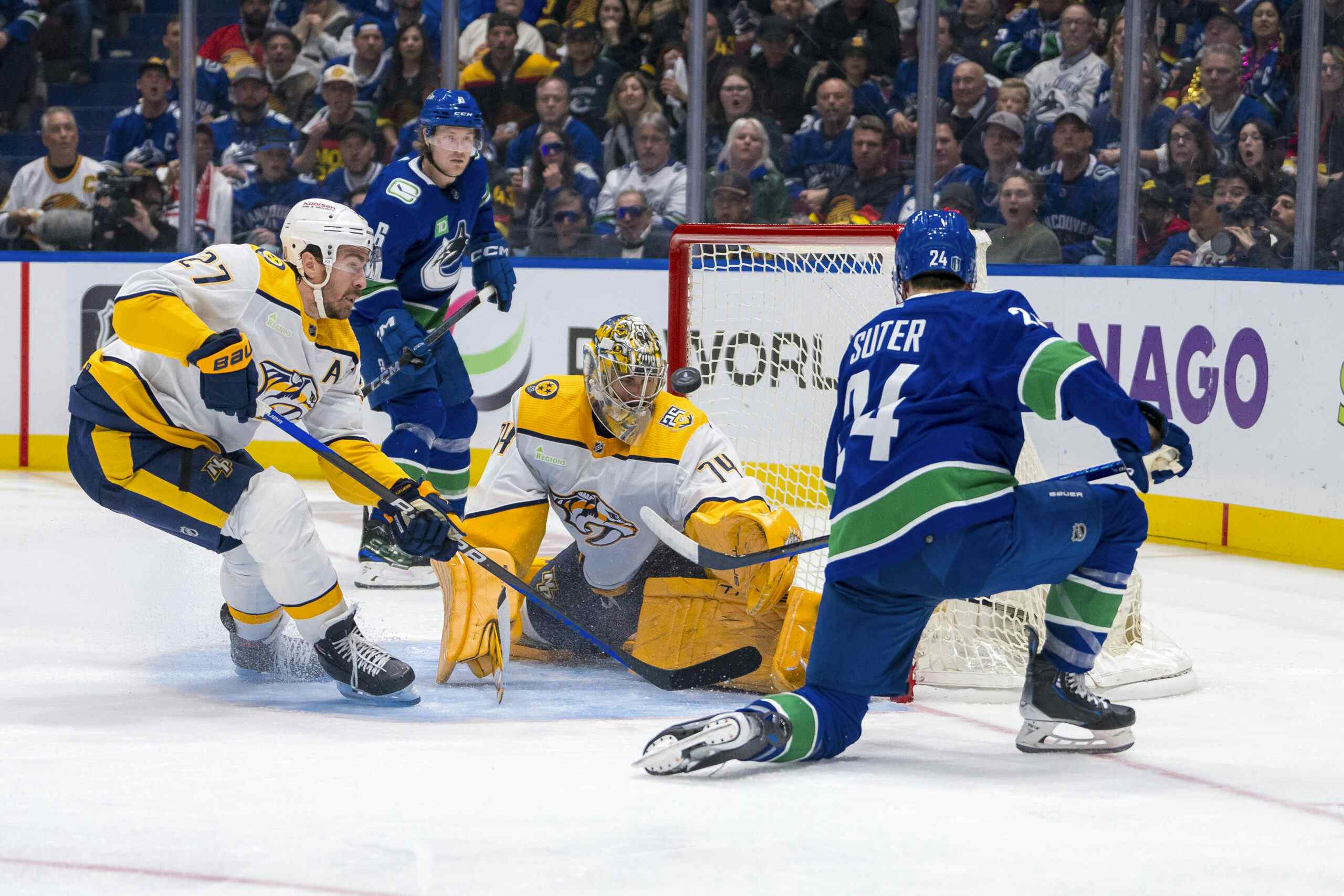Canucks Army Year in Review: Ben Hutton

By Taylor Perry
6 years agoAfter a surprising and mostly successful freshman campaign – one in which he was not expected to make the opening night roster – many observers claimed that Ben Hutton appeared to experience a slight regression in 2016-17. His one goal, 25-point performance in his rookie season was a very pleasant development for the Canucks organization. His follow-up season, not so much.
Jim Benning and the Canucks management group rewarded Hutton’s rookie year with a substantial raise. The two-year, $5.6 million dollar extension represented good value for a young defenceman who could be part of the Canucks core for years to come. Hutton’s numbers, however, took a small dip in 2017. Although he quintupled his goal output from one to five, he managed ten fewer assists while finishing with 19 points. That, in four fewer games. Due to this perceived slip in performance, Hutton became the subject of trade rumours as a sophomore, with particular links to Evander Kane in Buffalo, and more recently, to someone like Ryan Spooner in Boston.
But was Ben Hutton’s season as much a hit to his development as some would have you believe? The truth, as always, is a bit more nuanced.

Above are Hutton’s total 5v5 possession stats for the 2017 year, courtesy our friends at Stats Hockey Analysis. His possession rates actually witnessed a slight improvement over 2016, as we can see below.

While his expected goals for and against decreased and increased, respectively, the Canucks faced fewer attempts on goal when Hutton was on the ice in his second year than during his first. There was also a related decline in Canucks shot attempts, but that decline was not nearly as significant. Although his production may have dropped off a bit during his sophomore season, that may have had more to do with luck than any massive decline in his game.
It may also have had something to do with his defence partners. At even strength, Hutton was paired most often with Erik Gudbranson (until his injury) and Nikita Tryamkin (afterwards). In 428:05 of shared ice time at 5v5 with Gudbranson, the Canucks averaged 47.4% of total shot attempts. In 74:37 of even strength ice time without Hutton, the club’s shot attempt percentage with Gudbranson fell to 46%. For his part, without Gudbranson, Hutton actually experienced a slight uptick to 47.8%. These differences are illustrated most clearly in the graph below.

See that tiny red dot in the middle of the chart? That was Gudbranson’s performance without Hutton. The dot is small because the sample size is admittedly small (Desjardins rarely played Gudbranson at even strength without Hutton prior to his injury), but it indicates that Gudbranson may have in fact relied more on Hutton to shelter his play, rather than the reverse. This analysis runs contrary to Gudbranson’s pointed criticism of Hutton earlier in the season. Back in November, Hutton’s customary partner remarked:
We’re going to watch video and see what’s going on and this is a process with a young guy. He (Hutton) has less than 100 games and it takes 300 to learn to defend well.
Gudbranson received some criticism of his own for that comment, but his season would soon end abruptly due to injury – resulting in Hutton finding a new partner in Nikita Tryamkin. This pair would ultimately provide a more accurate assessment of Hutton’s play in 2017.
In 378:34 minutes of even strength ice time together, Hutton carried a 47.9% CF – a mark that held fairly stable even when the two were pulled apart. As we can see in the chart above, there was a remarkable amount of consistency between situations where Hutton and Tryamkin were together and when they were separated. The amount of overlap on the chart suggests that this was a more accurate reflection of Hutton’s 2016-17 campaign than his time spent with Gudbranson. It is also worth pointing out that the Canucks top three point producers – Bo Horvat and the Sedins – all experienced noticeably better CF percentages with Hutton than without him.
If we evaluate Hutton’s 2017 performance, therefore, in two different contexts – one with Gudbranson and the other with Tryamkin – then a different picture begins to emerge. Instead of a scenario where we interpret Hutton’s 2016-17 campaign as a developmental regression, we can more reasonably make the case that it was actually a slight improvement. His bottom line production decreased a bit more due to luck than anything immediately concerning about his play. The Canucks on-ice shooting percentage, for instance, dipped from 6.5% in 2016 to 6.1% last season when Hutton was on the ice, and should rebound with continued improved play from the young blueliner.
The Canucks, meanwhile, would be wary of placing too much emphasis on Hutton’s performance when partnered with Gudbranson. His play over the last half of the season justified some of the faith the organization placed in him when it signed him to that extension last summer. He may even make the next step before he reaches those coveted 300 games.
Recent articles from Taylor Perry





